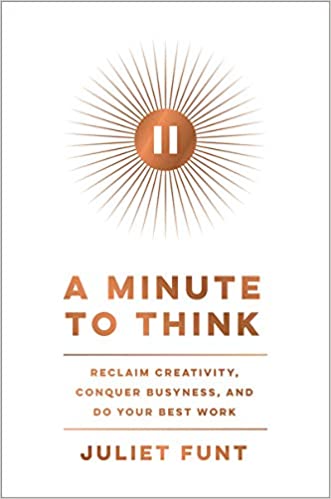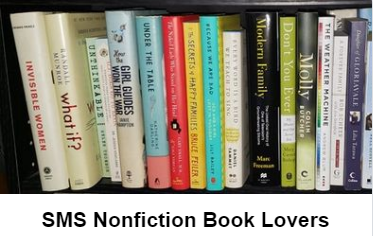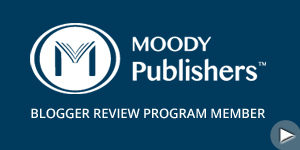A book review of A Minute to Think: Reclaim Creativity, Conquer Busyness, and Do Your Best Work by Juliet Funt
Stars: *****
Harper Business (2021)
Business
288 pages
Disclosure: I received a copy of this book in exchange for an honest review. This post contains affiliate links.
Summary: In A Minute to Think, Juliet Funt, a globally recognized warrior in the battle against busyness, provides a powerful guide that will give you the permission, framework, and specific direction you need to do the following:
- Regain control of your overloaded, caffeinated, inbox-worshiping workday
- Liberate yourself and your teams from burnout and busywork
- Reclaim creativity and focus despite the chaos around you
- Bring thoughtfulness into designing your next work norms
- Tame the beast of email and escape the mire of meetings
- Find your precious minute to think
You’re not alone in your yearning for freedom from constant reactivity. The global workforce today is so fried that it belongs in the food court of a county fair. We’re relentlessly behind the curve, dousing fires everywhere, and our 3 a.m. insomnia provides the only unscheduled thinking time of the day.
What we need reinserted in our lives is the missing element of white space—short periods of open, unscheduled time that, when recaptured, change the very nature of work. White space is the stepping back, the strategic pause, the oxygen that allows the sparks of our efforts to catch fire. White space has the power to radically—and simply—reinvent the way we approach work in this maxed-out, post-COVID 21st-century world.
A Minute To Think
This book does a great job of teaching business professionals how to have white space again in their lives so they can be more efficient with the time they do work. This book is not just about taking a rest and not being overworked. It’s more than that. The book is a few systems that together will make you a better worker.
If you do not work in an office (home or otherwise) you still will find some of the book relevant and helpful. However most of the book is talking to those who work in an office or home office.
“It’s for the managers who eat peanut butter at their desk because the idea of leaving for lunch seems like folklore from another time. It’s for executives who cancel their vacation four years in a row because they can’t see how to jump off a moving train without getting hurt. And it’s for the dads and moms pushing a swing with one hand and emailing with the other because ‘It’s all so important'”
pg 3-4
The author talks about how in the past, white space (or strategic pause) was common place. Somehow along the years we have lost it. We think we have to work, work, work without any stops.
“Thinking is time well spent. Only a certain generation remembers when this was an undebated fact. Back then if you caught your boss feet up on the desk, lost in thought, and staring out a window, you’d freeze as if you’d seen a rattlesnake, and then shift slowly backward, determined not to disturb them. Why? Because thinking time was commonly agreed to have value.”
pg 17
The Best Parts
The part that made the most sense I think where Juliet explains that there are four assets that can become risks if we over do them. For example Drive or Excellence is good but Overdrive or Perfectionism are too much. Similarly Information and Activity are good, Overload and Frenzy are too much. There are four questions we can ask to help us not get to the risk level. For the Drive/Overdrive section, we can ask ourselves, “Is there anything I can let go of?” Using these questions helps us to not overdo.
I also love the idea of a ROWE or Results Only Work Environment. I also love how the author explains it:
“This means the only thing we care about are results, not when or where an employee works. Not if they work on a weekend, weekday, evening, morning, in a box, with a fox, or in a tweetle beetle battle with a noodle-eating-poodle.”
pg 39 (reference is to Dr. Seuss’s Fox in Socks)
Buy A Minute to Think from Amazon.com and help support the blog
Find A Minute to Think at Goodreads.









